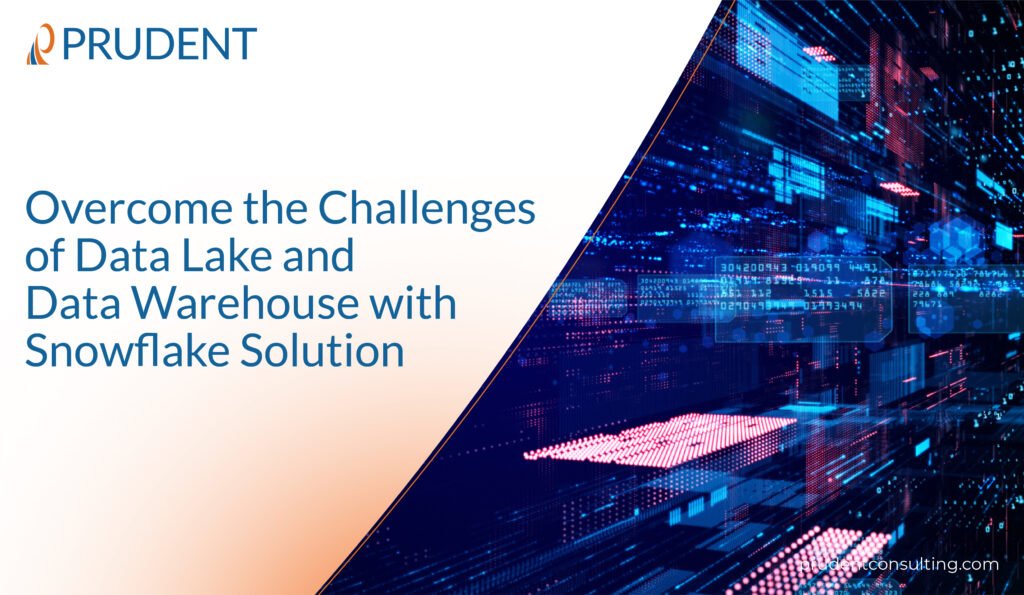What has Snowflake explicitly done to address the problems common to legacy Data Warehouses?
Snowflake has implemented several features and capabilities that address common problems associated with legacy data warehouses. Some of these include:
- Elasticity and scalability: Legacy data warehouses often have limited scalability and cannot handle sudden spikes in data processing demands. Snowflake provides an elastic, cloud-based data warehousing solution that can scale up or down automatically based on demand. It ensures the system can handle sudden data processing demands without issues.
- Separation of storage and compute: Snowflake separates storage and compute, meaning that users can scale these resources independently. This approach makes managing and optimizing both resources easier, resulting in better performance and cost savings.
- Zero-copy cloning: Traditional data warehouses require duplicating data when creating copies for different use cases. Snowflake’s zero-copy cloning allows users to create virtual copies of a database or data warehouse without duplicating data. It reduces the amount of storage required and improves performance.
- Automated maintenance and management: Legacy data warehouses require manual maintenance and management, which can be time-consuming and costly. Snowflake automates many of these tasks, including upgrades, patches, and security monitoring, which reduces the need for manual intervention and ensures that the system is always up-to-date and secure.
- Native cloud architecture: Snowflake was designed for the cloud from the ground up, which means that it takes full advantage of cloud capabilities such as on-demand resources, pay-as-you-go pricing, and geographic distribution. This approach enables faster performance, higher availability, and lower costs than traditional data warehousing solutions.
Overall, Snowflake’s approach to data warehousing addresses many of the common problems associated with legacy data warehouses, resulting in better performance, scalability, and cost-effectiveness.
Snowflake provides many of the features common to Data Lake systems
While Snowflake is primarily a cloud data warehousing platform, it offers some features commonly found in data lake systems. For example:
- Support for semi-structured data: Snowflake can handle semi-structured data formats like JSON, Parquet, and Avro, commonly used in data lake systems.
- Data ingestion from multiple sources: Snowflake supports ingesting data from various sources, including cloud storage platforms like Amazon S3, Azure Data Lake, and Google Cloud Storage, as well as streaming platforms like Kafka.
- Native cloud architecture: Like data lake systems, Snowflake is built on a cloud-native architecture, which makes it highly scalable, elastic, and able to take advantage of cloud resources like on-demand computing and storage.
- Support for data transformation: Snowflake offers SQL-based transformation capabilities, which allow users to transform data within the platform, like how data lake systems support transformation using tools like Apache Spark.
However, it’s important to note that Snowflake is primarily designed as a data warehousing platform, which means it may offer only some of the features and capabilities of a dedicated data lake system. For example, Snowflake may need to be optimized for storing massive amounts of unstructured data or for complex data processing workloads that require distributed computing. Nonetheless, Snowflake can be a viable option for organizations looking to build a cloud-based data platform that combines elements of both data warehousing and data lake systems.
The Snowflake Data Cloud allows customers to do things that Data Lake-based architectures can’t do well, at least so far.
The Snowflake Data Cloud offers several features and capabilities that may need to be more available or easily implemented with data lake-based architectures. Here are a few examples:
- Native cloud architecture: As a cloud-based data warehousing platform, Snowflake takes full advantage of the cloud’s scalability, elasticity, and on-demand resources. Customers can quickly scale their data processing and storage needs up or down as required without worrying about the underlying infrastructure.
- Separation of storage and compute: Snowflake separates storage and compute, allowing customers to scale these resources independently. It makes it easier to manage and optimize both resources and results in better performance and cost savings.
- Zero-copy cloning: Snowflake allows customers to create virtual copies of a database or data warehouse without duplicating data. It reduces the required storage and improves performance, making it easier for customers to create sandboxes, test environments, and other use cases.
- Data sharing: Snowflake’s data-sharing capabilities allow customers to share data with other users easily. It is beneficial for collaborating with partners, customers, or other stakeholders who may need access to the same data.
- Unified platform: The Snowflake Data Cloud provides a suitable platform for storing, processing, and analyzing data, which can simplify the overall data management process. It can be especially valuable for organizations with complex data ecosystems, multiple data sources, and use cases.
While data lake-based architectures can be highly flexible and scalable, they can also be complex to implement and manage. The Snowflake Data Cloud offers a simpler, more integrated approach that can provide several benefits to customers looking to leverage the power of the cloud for their data needs.
In conclusion, Snowflake has emerged as a powerful solution that overcomes the challenges of traditional data warehouses and data lakes. With its cloud-based approach, Snowflake offers scalability, flexibility, and faster data processing capabilities that are essential for modern businesses. It enables companies to store, manage, and analyze data from various sources and formats, providing a single source of truth for their data needs.
Prudent offers various services to help businesses harness the full potential of Snowflake. With its cloud computing and data management expertise, Prudent provides customized solutions for companies of all sizes. From data migration and integration to optimization and support, Prudent offers end-to-end services that enable businesses to make the most of their Snowflake investment.
In today’s data-driven business world, companies must pay attention to the power of Snowflake and the services offered by Prudent. By partnering with Prudent, companies can ensure that they have the right tools and expertise to unlock the full potential of Snowflake and drive their business growth.

